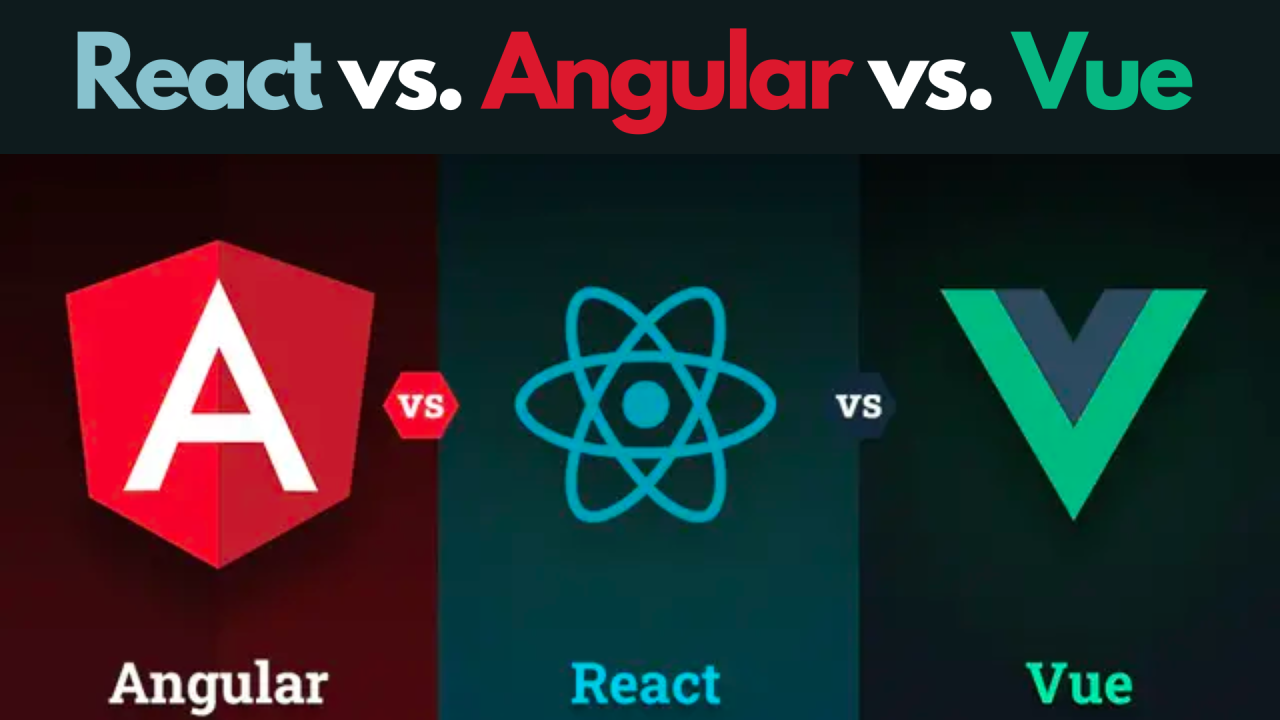In the ever-evolving world of web development, front-end frameworks play a pivotal role in creating dynamic and interactive user interfaces. These frameworks provide developers with the tools and structure to build robust web applications efficiently. Among the numerous front-end frameworks available, React, Angular, and Vue.js have emerged as some of the most popular choices. In this article, we will explore these three frameworks, comparing their features, strengths, and use cases to help developers make informed decisions when choosing the right front-end framework for their projects.
React
Overview: React, developed and maintained by Facebook, is a JavaScript library designed to build user interfaces (UIs) with a component-based approach. It allows developers to create reusable UI components and efficiently manage the application’s state using a virtual DOM. React’s popularity is attributed to its simplicity, strong community support, and performance optimization.
Strengths:
- Component-Based Architecture: React’s component-based structure enables developers to build modular and reusable UI elements, making code maintenance and scalability more manageable.
- Virtual DOM: React’s virtual DOM efficiently updates only the necessary parts of the actual DOM, reducing rendering time and improving overall performance.
- Large Community and Ecosystem: The vast React community offers extensive documentation, libraries, and third-party packages, facilitating rapid development.
- React Native: Leveraging React’s components, React Native enables developers to build cross-platform mobile applications with familiar tools.
Use Cases:
- Single-Page Applications (SPAs): React’s component-based nature makes it ideal for developing SPAs with complex UIs.
- Interactive User Interfaces: React’s virtual DOM and efficient rendering are well-suited for applications requiring frequent updates and real-time data.
Angular
Overview: Angular, developed and maintained by Google, is a TypeScript-based open-source front-end framework that provides a comprehensive set of tools for building complex applications. It emphasizes the use of declarative templates and two-way data binding to create dynamic user experiences.
Strengths:
- Full-Featured Framework: Angular provides a complete solution for front-end development, including powerful tools for routing, forms handling, and dependency injection.
- TypeScript Integration: TypeScript’s static typing enhances code quality, catching errors early in the development process and improving maintainability.
- Powerful CLI: Angular’s Command Line Interface (CLI) streamlines project setup, code generation, and testing, enhancing developer productivity.
Use Cases:
- Enterprise Applications: Angular’s extensive feature set and robust architecture are well-suited for building large-scale, data-driven applications.
- Complex User Interfaces: Applications with intricate UI components and interactions can benefit from Angular’s two-way data binding and declarative templates.
Vue.js
Overview: Vue.js, often referred to as Vue, is a progressive JavaScript framework designed to build user interfaces incrementally. Developed by Evan You, Vue.js has gained popularity for its simplicity, flexibility, and ease of integration with existing projects.
Strengths:
- Approachable and Easy to Learn: Vue’s gentle learning curve makes it an attractive choice for both beginners and experienced developers looking for a quick start.
- Flexibility: Vue.js can be integrated into existing projects, allowing developers to use it for specific parts of an application rather than adopting it entirely.
- Performance: Vue’s small size and efficient rendering make it lightweight and well-suited for projects where performance is a priority.
Use Cases:
- Prototyping: Vue.js’s ease of use and quick setup make it an excellent choice for prototyping and building Minimum Viable Products (MVPs).
- Small to Medium-Sized Projects: Vue.js is well-suited for smaller projects, startups, or applications with limited complexity.
Conclusion
Choosing the right front-end framework is crucial for the success of any web development project. React, Angular, and Vue.js are all excellent choices, each with its unique strengths and use cases. React’s component-based approach and virtual DOM make it suitable for SPAs and interactive UIs. Angular’s comprehensive feature set and TypeScript integration are well-suited for large-scale enterprise applications. Vue.js’s simplicity and flexibility make it a great option for smaller projects and rapid prototyping.
Ultimately, the decision on which framework to use should consider the project’s requirements, the team’s expertise, and the desired development speed. By exploring the features and use cases of React, Angular, and Vue.js, developers can make informed decisions and deliver exceptional web applications to their users.






